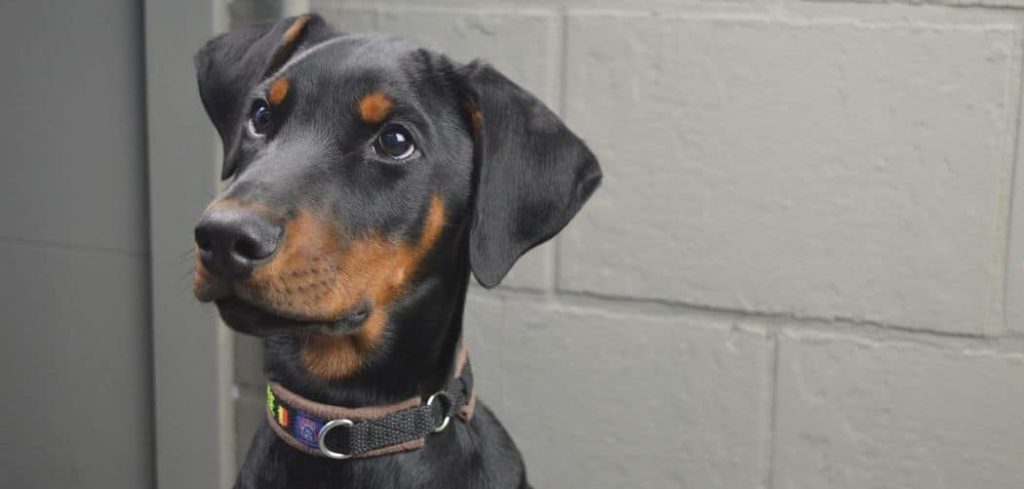Seeing your dog have liquid diarrhea and then refuse to eat can be distressing for any pet owner. These symptoms may seem like a stomach bug, but they could also signal a deeper issue that requires prompt attention.
We outline the common causes of dog liquid poop and not eating, what you can do at home, and when to seek veterinary help.
Dog Liquid Poop and Not Eating — Why It Happens
Liquid diarrhea combined with appetite loss usually points to a digestive upset, infection, toxin exposure, or a more serious internal condition.
Dogs may have liquid stools after eating something they shouldn’t or due to changes in diet, parasites, or gastrointestinal diseases.
When they also refuse food, it’s a strong indication that their body is under stress—either from pain, nausea, or systemic inflammation. Dehydration and electrolyte imbalances can develop quickly in these situations, making early intervention crucial.

Dog Liquid Poop and Not Eating: Common Causes
Dietary Indiscretion
Dogs are notorious for eating things they shouldn’t—from garbage to spoiled food.
When your dog consumes something irritating or toxic, their digestive tract reacts quickly. Liquid diarrhea and refusal to eat are common results.
Vomiting, flatulence, or a swollen belly may follow. While mild cases may resolve with fasting and bland food, serious cases can escalate into dehydration or pancreatitis.
Intestinal Parasites
Parasites like roundworms, hookworms, and giardia can wreak havoc on your dog’s digestive system.
They often cause watery or bloody diarrhea, poor appetite, weight loss, and a dull coat. Puppies and dogs with weak immune systems are particularly vulnerable.
If your dog hasn’t been recently dewormed or has had exposure to contaminated water, parasites are a strong possibility.
Bacterial or Viral Infections
Infections such as parvovirus, salmonella, or campylobacter can lead to severe diarrhea and appetite loss.
Parvo is especially dangerous in puppies and presents with bloody liquid stool, vomiting, and extreme lethargy.
Other infections might result in fever, weakness, and dehydration.
These cases are emergencies and require aggressive treatment.
Read more: Dog Licking Paws and Not Eating (Understand what’s going on)
Inflammatory Bowel Disease (IBD)
IBD is a chronic condition where the lining of the digestive tract becomes inflamed.
This leads to poor nutrient absorption, chronic liquid diarrhea, weight loss, and intermittent vomiting.
Dogs with IBD may go through cycles of flare-ups and recovery.
Appetite loss is common during flare-ups due to nausea and abdominal discomfort.
Toxin Ingestion
If your dog has ingested something poisonous, the first signs are often digestive.
Toxins from certain plants, chemicals, medications, or spoiled food can cause explosive diarrhea and food refusal.
Other signs might include drooling, shaking, or even seizures depending on the substance.
If you suspect poisoning, seek veterinary help immediately.
Pancreatitis
Pancreatitis occurs when the pancreas becomes inflamed, often after eating fatty foods.
Symptoms include watery diarrhea, vomiting, belly pain, and refusal to eat.
The dog may adopt a praying position (front legs stretched forward) to ease discomfort. It can be life-threatening if not treated promptly.
What to Do If Your Dog Has Liquid Poop and Is Not Eating
Start by withholding food for 12–24 hours to allow the stomach to settle—but never withhold water.
Encourage small sips of clean water or offer ice cubes if your dog refuses to drink.
After the fasting period, try introducing a bland diet of boiled chicken and white rice in small amounts.
Monitor your dog’s energy level, hydration status (check for dry gums or skin tenting), and bathroom habits.
Avoid giving over-the-counter medications unless directed by a vet. If your dog’s condition doesn’t improve in a day or worsens, contact your vet.
Keeping a stool sample may help your vet diagnose the issue faster.
When to Call or Visit Your Vet
Contact your veterinarian right away if your dog:
Has had diarrhea for more than 24–48 hours
Refuses food for an entire day
Is vomiting in addition to having diarrhea
Shows signs of dehydration (sunken eyes, dry gums, lethargy)
Has bloody or black stool
Is a puppy, senior, or has a known health condition
In these cases, delays in care can lead to serious complications or even be life-threatening.
Read more: Dog Diarrhea and Not Eating (What could be causing it?)
Key Takeaway
Liquid diarrhea and a lack of appetite in dogs should never be taken lightly.
While some cases may be due to simple dietary issues, others could indicate infections, inflammation, or poisoning.
Monitor your dog closely, provide supportive care at home, and reach out to your vet if symptoms persist or worsen.
Quick action can prevent complications and help your dog recover faster.
